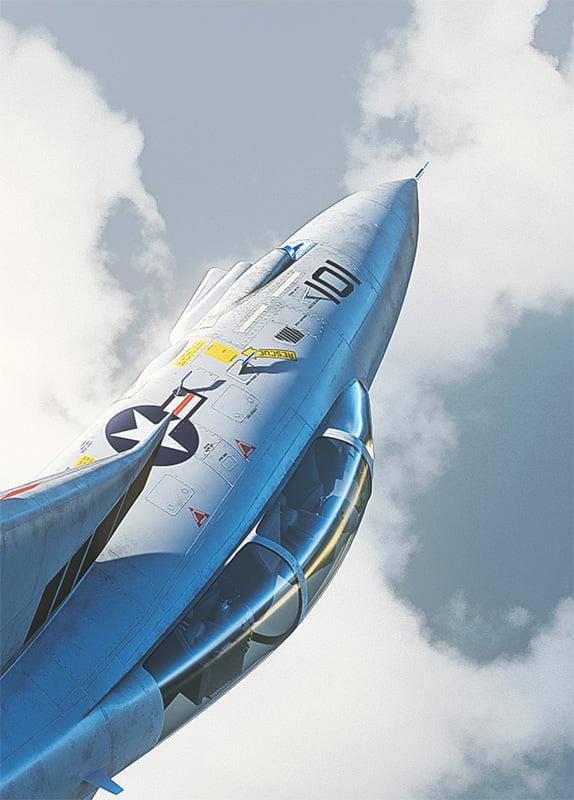The F-16N Viper
The US Navy purchased an F-16N Viper, a version of the F-16 Fighting Falcon used by the US Air Force, to simulate fourth-generation Soviet fighters as adversary aircraft in air combat training. The smaller, more maneuverable F-16N proved an extremely difficult opponent for the F-14.

Designed by aviation artist Mads Bangsø in collaboration with former F-14 Tomcat Radar Intercept Officer (RIO) David Parsons, the artwork in this post is featured in their book Half Century, Baby! and was realized by Aircraftprofileprints.com.
The DACT technique that made gun kills on F-16Ns possible from the much larger F-14
As the artwork (named Fight’s On) shows, the theme of the print is dogfight: specifically, in a close air-to-air combat scenario, who will win? The F-14 Tomcat or the F-16N Viper (possibly the finest adversary fighter ever flown by the US Navy)? The answer is not as straightforward as you might think. The story behind the artwork is that of CDR Keith “Okie” Nance, who developed a Dissimilar Air Combat Training (DACT) technique that made gun kills on F-16Ns possible from the much larger F-14.

‘The beautiful weather and pristine sea surrounding Naval Air Station Key West has been ideal for those seeking the sun and for DACT. By 1989, the penultimate Adversary Aircraft was the F-16N “Viper,” which had an amazing thrust-to-weight ratio and ability to execute 9G turns. That made for a formidable adversary for Tomcat Aircrews, as they learned out to fight their aircraft during the Fleet Readiness Squadron (FRS) Tactics Phase typically conducted out of Key West to take advantage of the weather.
‘Experienced Tomcat pilots found that even the F-16N was not that invincible if the Tomcat was flown to its advantage and stayed out of the situations in which the F-16N could prevail. One of the masters of this type of encounter was CDR Keith “Okie” Nance, who was not intimidated by the F-16N and routinely took it on in the so-called knife fight in a phone booth and prevailing.

The spirit of attack
‘In this depicted encounter, “Okie” has merged in a VF-101 F-14A+ with a VF-43 F-16N and entered a one-circle fight in which there can only be one victor. “Okie” has used the Tomcat’s ability to pitch and maintain energy as the F-16N is bleeding energy and will soon be at a disadvantage as the Tomcat uses the altitude advantage to pull down in behind the F-16N for a guns solution with its M61 Vulcan Cannon.
‘Although experienced Tomcat pilots like “Okie” were able to take on nimble adversaries like an F-16N or A-4F Skyhawk known as the “Super Fox”, the tactics they used were imparted to the Replacement Aircrews under instruction at VF-101 so they could also perform similar feats.
‘LTGEN Adolf Galland, the famed WWII German Ace, once said, “Only in the spirit of attack, born in a brave heart, will bring success to any fighter aircraft, no matter how highly developed it may be.” This was certainly true over the skies of Key West.’
Half Century, Baby! is published by Mortons Books and is available to order here and here.

